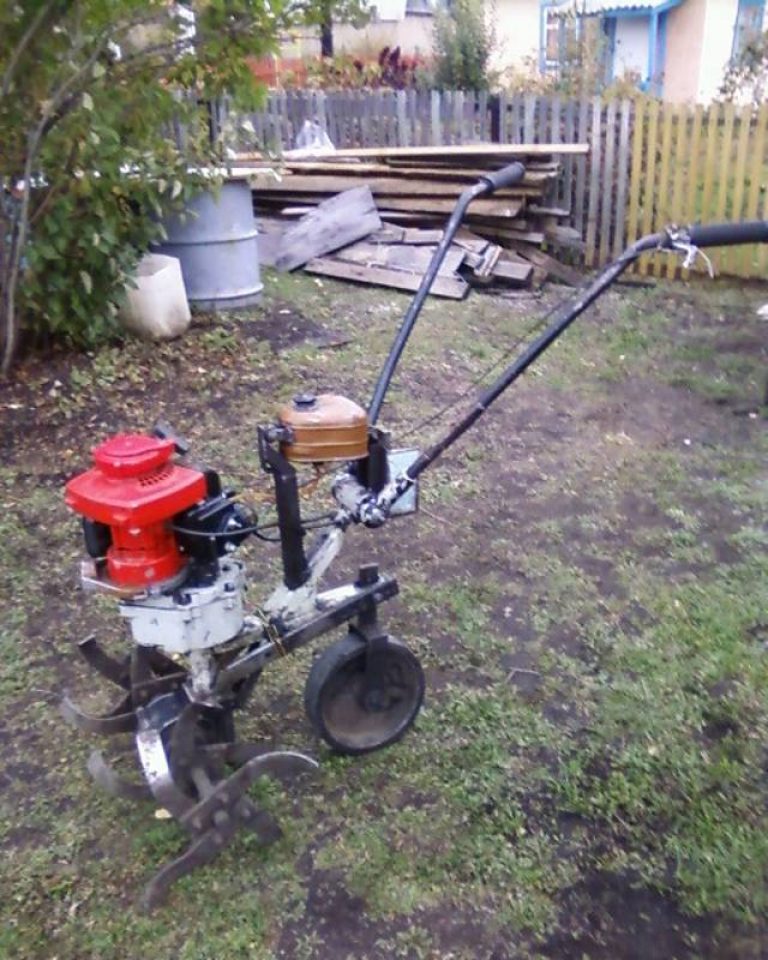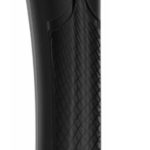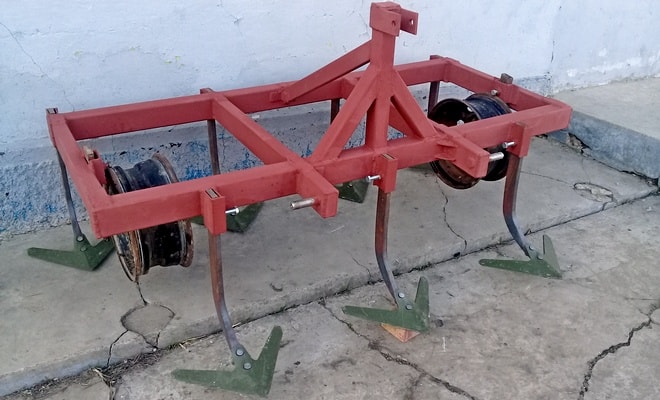DIY cultivator
Working on a personal plot is hard work. Digging, harrowing, weeding, hilling, fertilizing plantings - all this requires a lot of time and great physical effort.
A manual cultivator will help you save a lot of energy and get a few extra hours of rest. This small unit consists of a motor with a gearbox connected to a handle for control. Various attachments are attached to the engine on a suspension, depending on what specific tasks are to be solved with the help of the cultivator.
A ready-made manual assistant can be purchased at any large hardware store. But, if you have minimal knowledge and skills in basic electromechanics, it can be assembled from improvised means.
The content of the article
How to make a homemade cultivator
There are many options for what exactly to make a universal device for working on a summer cottage - it all depends on what area needs to be processed and what types of garden tasks to solve.
When assembling a homemade cultivator, everything that is lying around in the garage or closet can be useful: a motor from an old washing machine, a chain or sprockets from a bicycle that a child has outgrown, a drill, wheels from a grinder, old car springs. The scope for engineering imagination is truly limitless.
Several details necessary for most DIY cultivators will remain unchanged:
- base frame;
- wheels;
- engine;
- gearbox;
- a cable of sufficient length (40 meters or more) if we are talking about installing an electric motor.
In addition, it is advisable to provide some kind of casing that will protect the motor from soil, grass or other unnecessary particles getting into it. Any metal sheet can handle this quite well - the same piece of tin or the remains of a corrugated sheet.
From the Bulgarian
Even a burnt tool can become the basis for a cultivator.
It is necessary to weld a small frame from corners or pipes on which the motor will be installed. Handles need to be welded to this frame according to the height of the person who will work with the cultivator. Wheels of a small circle are attached to the sides of the frame.

The engine for such a unit can be a motor from a washing machine or a powerful electric drill. The speed of its revolutions will be regulated by a gearbox from an angle grinder. The cutter can be driven by a chain from a bicycle. It is necessary to attach the wire and the start button to the handle.
See the video for manufacturing option.
From the trimmer
The easiest way to build a cultivator is from a trimmer - equipment designed for cutting grass. It would seem, why convert one type of garden tool into another? It's simple - a powerful trimmer costs much less than any budget cultivator.
To create the device you will need only four elements:
- trimmer must be working:
- regular pitchforks;
- a round metal disk with a circumference of about 10 cm;
- small diameter steel pipe.
You need to bend a conveniently shaped handle from the pipe. Disassemble the forks into teeth, flatten them slightly and weld 3 pieces at equidistant distances to the disk.
Using welding, connect the trimmer and the frame-handle, screw the shaft with the cutters. That's it, the cultivator is ready.
Before mounting on the cutter, the fork teeth should be flattened and sharpened a little. Instead of forks, you can use the same steel strips. For example, cut from a car spring.
From a chainsaw
If there is no electricity on the site or the power source is too far from the garden, then the electric motor is not suitable for creating a cultivator. In this case, an old “Friendship” type chainsaw or any other suitable power will come in handy.
First of all, the frame with handles is welded or assembled using bolts. A wheel is attached to the bottom front to make it easier to move the heavy unit around the site.
The saw engine is placed on the cross members of the frame. A chain is stretched from it to the cutter (ideal from a large bicycle or a light moped). The engine must be covered with a casing so that it does not become clogged with soil when working.

When using a gasoline engine, you must provide where to install a container for fuel so that it flows freely to the engine.
Rotary
Assembling a rotary cultivator is quite a troublesome task. The whole problem is in the disks: they should not be flat, but spherical. They are welded to bushings that are fixed to the axle. The axle itself is fixed in brackets, which are already fixed to the frame with handles.
With the help of such a reliable device, you can harrow the ground and loosen dense soil. The design is also good because it does not require any motor.
From a drill
With the proper skill and ingenuity, it’s quite easy to turn a construction tool into a garden tool. It is enough to install the drill on the frame and attach the cutters to it - an excellent, lightweight and maneuverable cultivator is ready.
A drill is mounted on a frame with handles and wheels. A steel rod with a diameter of 10–12 mm is fixed on its chuck.It is he who will rotate the cutters. In this version, the cutters can be made from steel strips about 15 cm long. They are sharpened on both sides and bent at right angles. Then they are welded to the driving rod.
Do not overload the rotational element - 2-3 cutters are enough. This amount will ensure good tillage of the soil, but will not overload the engine.
To adjust the speed, you can install a gearbox. The speed switching and start button is located on the frame handle.
Variant of the tool from a drill in the video.
From a bicycle
If you don’t have any engine at hand or a welding machine is inaccessible, you can still make it easier to process the area. An old bicycle will serve as an excellent basis for homemade hand cultivator.
In addition to the parts of the steel horse (frame and wheels), you will need metal rods for the tool head. The reinforcement must be sharpened and bent into a claw shape at one end and flattened at the other. If there is welding, then the claws are welded to a strip of durable metal. If it is missing, you can get by with bolts.
The finished cultivator head is also attached using bolts or welding to the bicycle frame. A wheel is attached to the opposite side of the frame - ideal for a children's model. To control the homemade product, handles made of a metal pipe are attached.
For the handles, it is better to take an aluminum pipe to lighten the weight of the homemade device.
Despite its apparent simplicity and unpretentiousness, such a manual cultivator made from a bicycle will significantly speed up digging or leveling a plot of land and will relieve some of the load from the muscles of the back, shoulders and arms.





